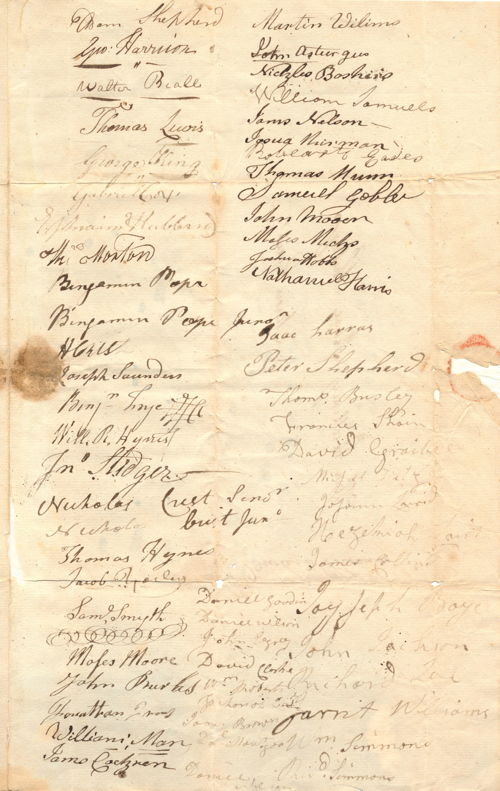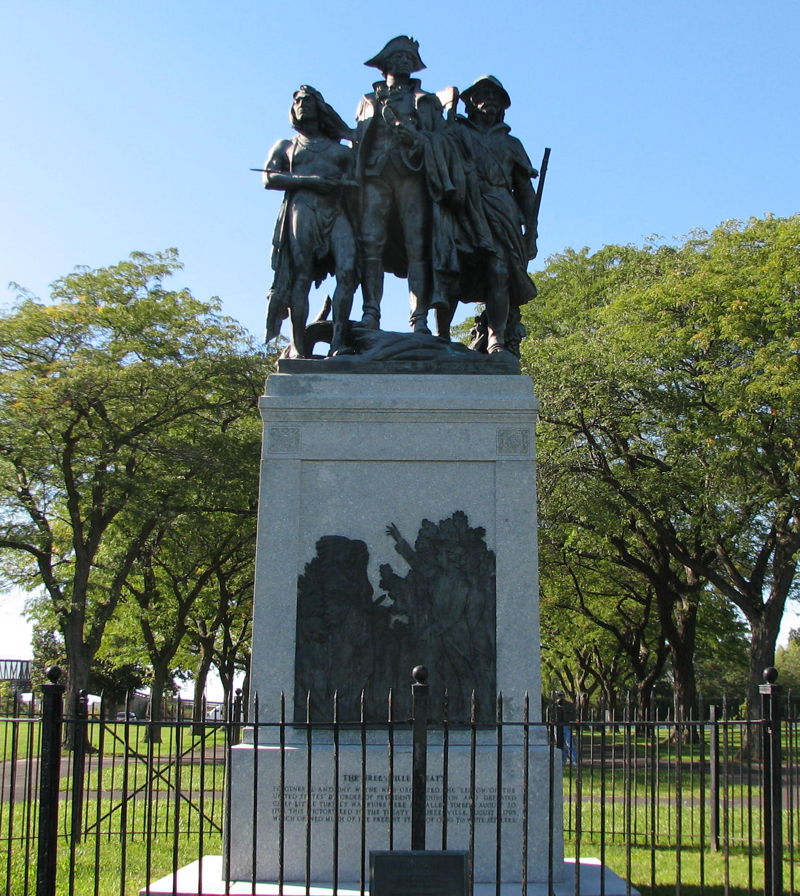
The following article by Charles Hartley was published on 12 Jun 2016.
It was May 1793. Our nation was in its infancy. President Washington was beginning his second term in office, and Isaac Shelby was in his first year as Kentucky's governor. The town of Shepherdsville would not be established until December, and Bullitt County's existence was still four years away. But plenty was happening along Salt River, with the salt works at Bullitt's Lick well established, and a ferry in operation between Dowdall's Station and Pope's Cabin just upstream from the future site of Shepherdsville.
These were dangerous years. The previous decade had seen numerous Indian attacks. Those killed included Colonel John Floyd, Walker Daniel (Kentucky's first Attorney General), an Irish merchant named George Keightly, and Colonel William Christian, the proprietor of Bullitt's Lick, among many others. Henry Crist had barely survived an Indian ambush in 1788, that had taken the life of Christian Crepps and others.
While the British had relinquished their hold on the land as far west as the Mississippi River following the Revolutionary War, Indians living and hunting in that region weren't inclined to abandon what they felt was rightfully theirs. This was particularly true north of the Ohio River where many of them then lived; but they looked upon Kentucky as their hunting grounds as well.
Attempts to force the Indians to come to terms failed with the utter defeat of St. Clair's forces at the headwaters of the Wabash River in November 1791, which emboldened the Indians to strike across the Ohio River into Kentucky with numerous raiding parties.

Reports, and misreports, of raiding parties raised fears throughout the state, and resulted in calls for Governor Shelby to call out militia forces to protect settlements.
In May 1793, Edward Thomas, then Nelson County's state representative, wrote to Governor Shelby on behalf of more than sixty of the area's inhabitants to express their concerns regarding the placement of a a defense post at the mouth of the Salt River.
Their contention was that the best use of militia would be at that point to enable them to discover the raiding parties at the point where they crossed the Ohio to venture up the Salt River valley. They were writing to the governor because they believed he had decided against this.
To make their point more forcefully, sixty-two men had signed this letter, as you can see here. We have transcribed their names, as best we can, and the list appears below the image shown here.
They included men like Adam Shepherd, founder of Shepherdsville; Benjamin Pope who built the cabin mentioned earlier; Henry Crist, a saltmaker who would go on to represent the area in the United State House of Representatives; other saltmakers like Benjamin Frye, John Essrey, Jonathan Irons, and Joshua Hobbs; Jarrett Williams, a former soldier under George Rogers Clark; and Moses Moore, who leased Bullitt's Lick from the Christian family, and who would later become Bullitt County's first county judge.
From a rough draft of the governor's response, we learn that a Colonel Joseph Lewis had urged him against this proposal, and that since the governor did not feel qualified to decide, he was leaving the decision in the hands of General Robert Breckinridge.
It is unclear whether a post was placed at the mouth of Salt River, but the governor continued to be concerned about this area. In June 1794, he ordered Breckinridge to call into service two parties of militia to be stationed at Bullitt's Lick and Mann's Lick to protect their exposed positions, and also a dozen "spyes" to determine the locations of raiding bands.

On the national scene, the terrible defeat of St. Clair's forces led President Washington to recognize that the militia was generally unreliable against the Indians. With this knowledge, he and others persuaded Congress to establish the "Legion of the United States," with a strength of over five thousand men. This body was placed under the command of Major General Anthony Wayne.
Wayne refused to be rushed into combat before his troops were ready. About the time that Thomas was writing to Governor Shelby, Wayne was moving his forces to Fort Washington (present-day Cincinnati) where he continued to train and supply his troops.
When negotiations with the Indians failed, Wayne moved his troops forward, and the two sides engaged in pitched battle at the site now known as Fallen Timbers where Wayne's troops were victorious.
Meanwhile, raiding parties into Kentucky had slackened considerably. The last report of fighting that occurred in what was to become Bullitt County happened on the east side of the Rolling Fork River where a creek later named Indian Run enters the river. Raiders had ventured as far as Severns Valley (Elizabethtown) and had been pursued by a small force led by Colonel Patrick Brown. Brown's forces discovered the Indians at this point, and were successful in destroying most of the raiders.
With General Wayne's victory, and subsequent destruction of Indian villages and crops, a coalition of Indian tribes met with him in August 1795 to effectively end the conflict. Sporadic clashes would continue to occur for some time, but for this region the fighting was happily over.
Copyright 2016 by Charles Hartley, Shepherdsville KY. All rights are reserved. No part of the content of this page may be included in any format in any place without the written permission of the copyright holder.
The Bullitt County History Museum, a service of the Bullitt County Genealogical Society, is located in the county courthouse at 300 South Buckman Street (Highway 61) in Shepherdsville, Kentucky. The museum, along with its research room, is open 10 a.m. to 4 p.m. Monday through Friday. Saturday appointments are available by calling 502-921-0161 during our regular weekday hours. Admission is free. The museum, as part of the Bullitt County Genealogical Society, is a 501(c)3 tax exempt organization and is classified as a 509(a)2 public charity. Contributions and bequests are deductible under section 2055, 2106, or 2522 of the Internal Revenue Code. Page last modified: 12 Sep 2024 . Page URL: bullittcountyhistory.org/memories/shelbyletter.html